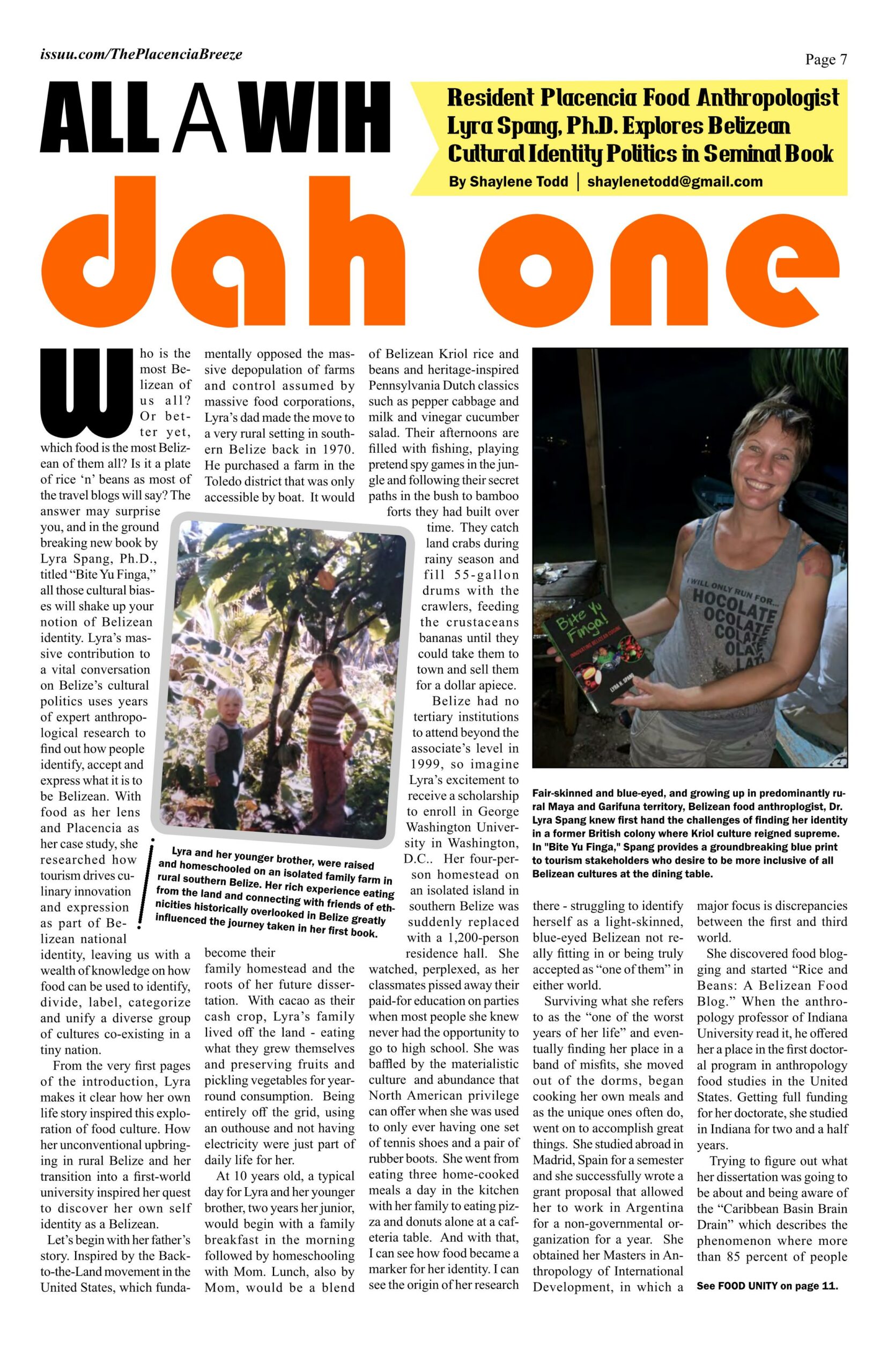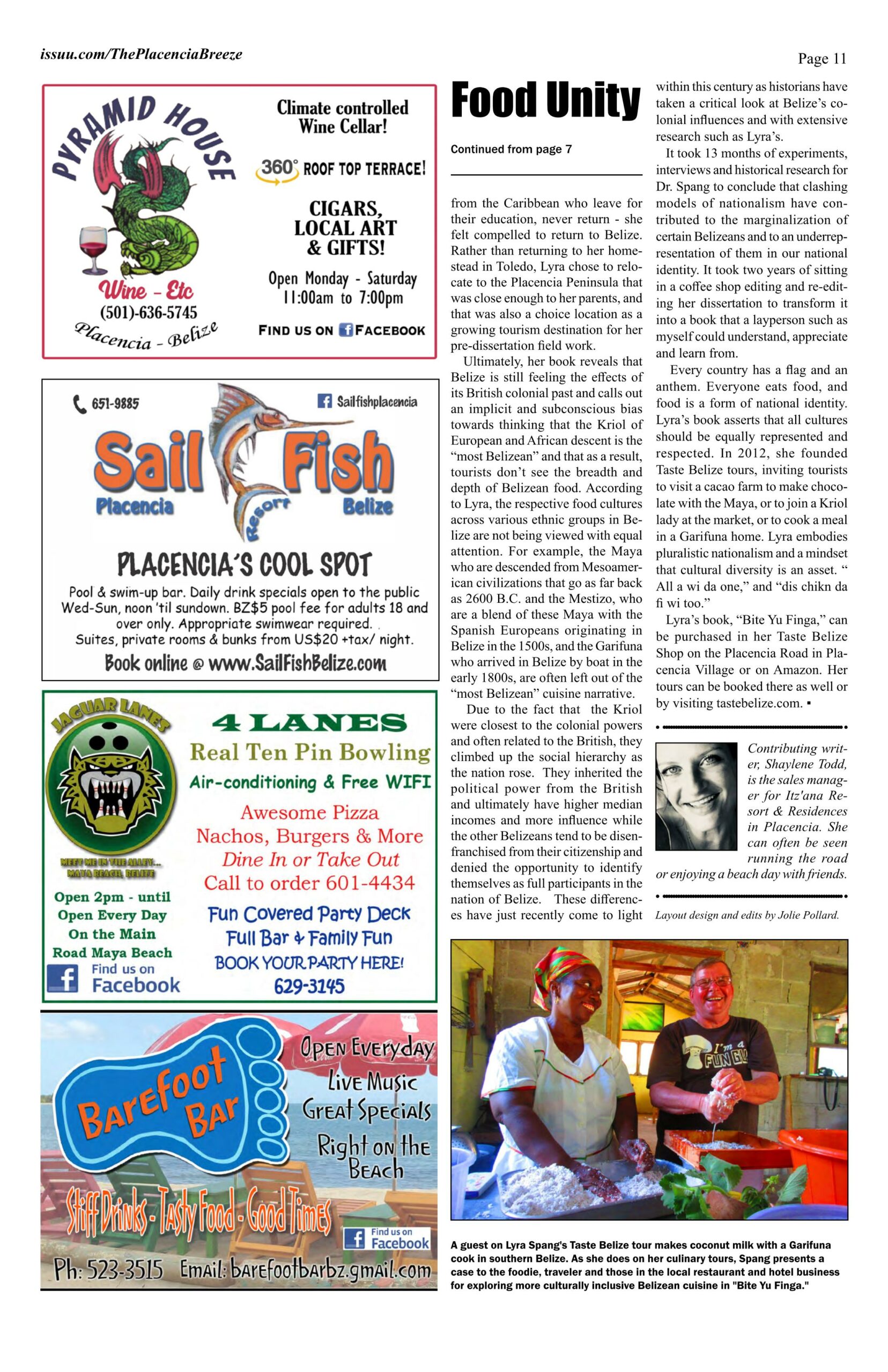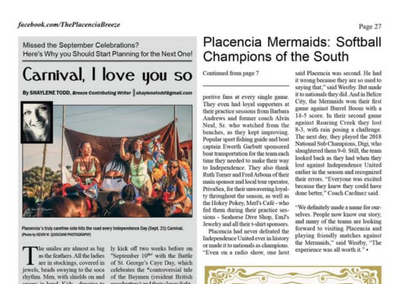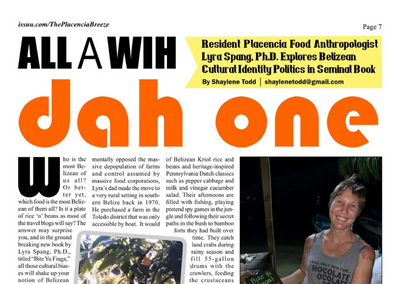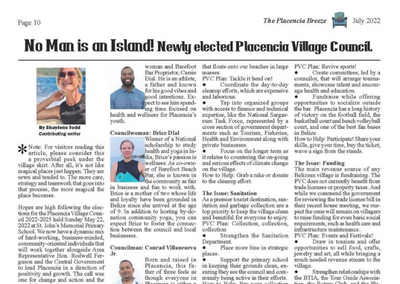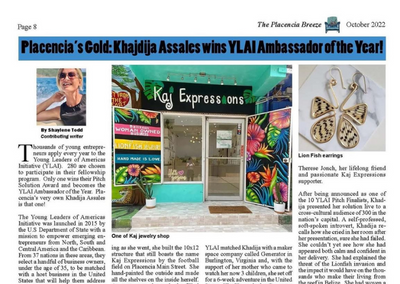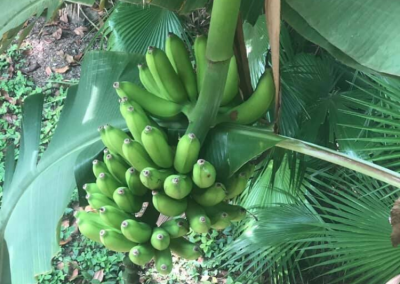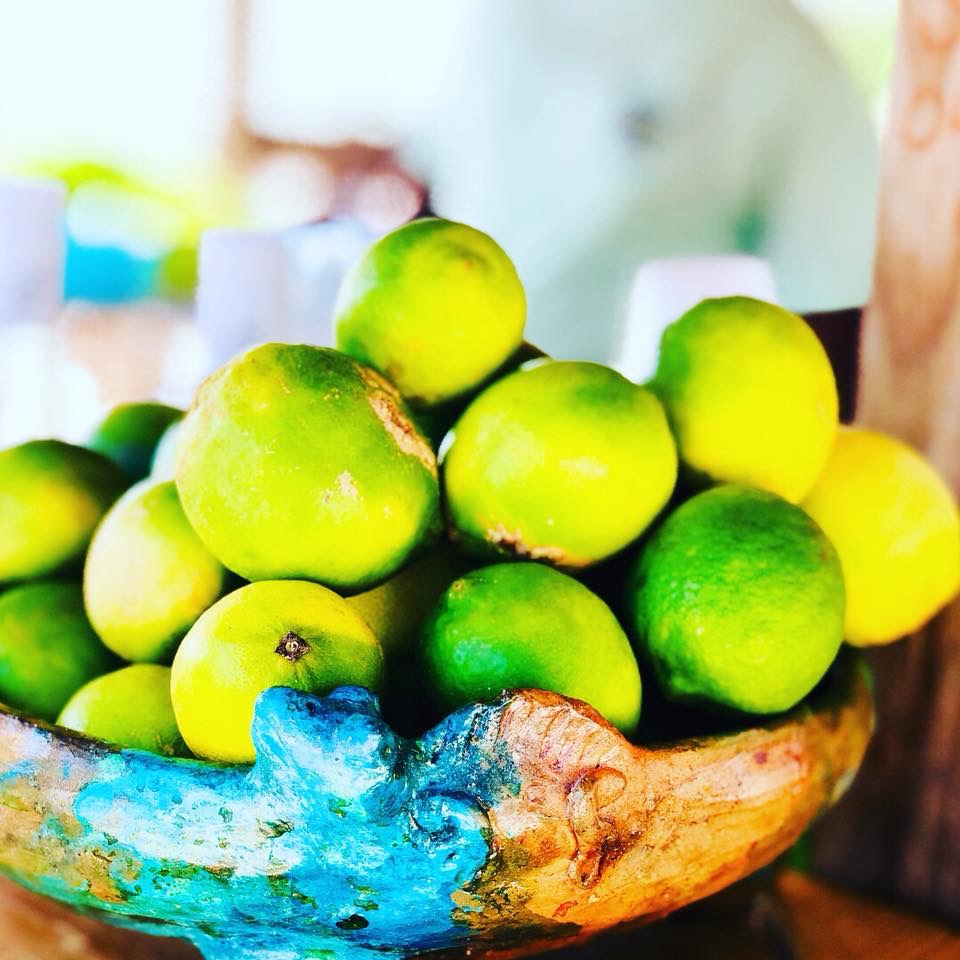All a wi da one: Lyra Spang’s Journey into Food Tourism & Cultural Identity
Who is the most Belizean of us all? Or better yet, which food is the most Belizean of them all? Is it a plate of rice ‘n’ beans as most of the travel blogs will say? The answer may surprise you, and in the ground breaking new book by Lyra Spang, Ph.D., titled “Bite Yu Finga,” all those cultural biases will shake up your notion of Belizean identity. Lyra’s massive contribution to a vital conversation on Belize’s cultural politics uses years of expert anthropological research to find out how people identify, accept and express what it is to be Belizean. With food as her lens and Placencia as her case study, she researched how tourism drives culinary innovation and expression as part of Belizean national identity, leaving us with a wealth of knowledge on how food can be used to identify, divide, label, categorize and unify a diverse group of cultures co-existing in a tiny nation.
From the very first pages of the introduction, Lyra makes it clear how her own life story inspired this exploration of food culture. How her unconventional upbringing in rural Belize and her transition into a first-world university inspired her quest to discover her own self identity as a Belizean.
Let’s begin with her father’s story. Inspired by the Back-to-the-Land movement in the United States, which fundamentally opposed the massive depopulation of farms and control assumed by massive food corporations, Lyra’s dad made the move to a very rural setting in southern Belize back in 1970. He purchased a farm in the Toledo district that was only accessible by boat. It would become their family homestead and the roots of her future dissertation. With cacao as their cash crop, Lyra’s family lived off the land – eating what they grew themselves and preserving fruits and pickling vegetables for year-round consumption. Being entirely off the grid, using an outhouse and not having electricity were just part of daily life for her.
At 10 years old, a typical day for Lyra and her younger brother, two years her junior, would begin with a family breakfast in the morning followed by homeschooling with Mom. Lunch, also by Mom, would be a blend of Belizean Kriol rice and beans and heritage-inspired Pennsylvania Dutch classics such as pepper cabbage and milk and vinegar cucumber salad. Their afternoons are filled with fishing, playing pretend spy games in the jungle and following their secret paths in the bush to bamboo forts they had built over time. They catch land crabs during rainy season and fill 55-gallon drums with the crawlers, feeding the crustaceans bananas until they could take them to town and sell them for a dollar apiece.
Belize had no tertiary institutions to attend beyond the associate’s level in 1999, so imagine Lyra’s excitement to receive a scholarship to enroll in George Washington University in Washington, D.C.. Her four-person homestead on an isolated island in southern Belize was suddenly replaced with a 1,200-person residence hall. She watched, perplexed, as her classmates pissed away their paid-for education on parties when most people she knew never had the opportunity to go to high school. She was baffled by the materialistic culture and abundance that North American privilege can offer when she was used to only ever having one set of tennis shoes and a pair of rubber boots. She went from eating three home-cooked meals a day in the kitchen with her family to eating pizza and donuts alone at a cafeteria table. And with that, I can see how food became her marker for how she identified herself as different from everyone else. I can see the origin of her research there – struggling to identify herself as a light-skinned, blue-eyed Belizean not really fitting in or being truly accepted as “one of them” in either world.
Surviving what she refers to as the “one of the worst years of her life” and eventually finding her place in a band of misfits, she moved out of the dorms, began cooking her own meals and as the unique ones often do, went on to accomplish great things. She studied abroad in Madrid, Spain for a semester and she successfully wrote a grant proposal that allowed her to work in Argentina for a non-governmental organization for a year. She obtained her Masters in Anthropology of International Development, in which a major focus is discrepancies between the first and third world.
She discovered food blogging and started “Rice and Beans: A Belizean Food Blog.” When the anthropology professor of Indiana University read it, he offered her a place in the first doctoral program in anthropology food studies in the United States. Getting full funding for her doctorate, she studied in Indiana for two and a half years.
Trying to figure out what her dissertation was going to be about and being aware of the “Caribbean Basin Brain Drain” which describes the phenomenon where more than 85 percent of people from the Caribbean who leave for their education, never return – she felt compelled to return to Belize. Rather than returning to her homestead on the island in Toledo, Lyra chose to relocate to the Placencia Peninsula that was close enough to her parents, and that was also a choice location as a growing tourism destination for her pre-dissertation field work.
Ultimately, her hypothesis evolved to state that in Belize that is still feeling the effects of its British colonial past, we have an implicit and subconscious bias towards thinking that the Kriol of European and African descent is the “most Belizean” and that as a result, tourists don’t see the breadth and depth of Belizean food. According to Lyra, the respective food cultures across various ethnic groups in Belize are not being viewed with equal attention. For example, the Maya who are descended from Mesoamerican civilizations that go as far back as 2600 B.C. and the Mestizo, who are a blend of these Maya with the Spanish Europeans originating in Belize in the 1500s, and the Garifuna who arrived in Belize by boat in the early 1800s, are often left out of the “most Belizean” cuisine narrative.
Due to the fact that the Kriol were closest to the colonial powers and often related to the British, they climbed up the social hierarchy as the nation rose. They inherited the political power from the British and ultimately have higher median incomes and more influence while the other Belizeans tend to be disenfranchised from their citizenship and denied the opportunity to identify themselves as full participants in the nation of Belize. These differences have just recently come to light within this century as historians have taken a critical look at Belize’s colonial influences and with extensive research such as Lyra’s.
It took 13 months of experiments, interviews and historical research for Dr. Spang to conclude that clashing models of nationalism have contributed to the marginalization of certain Belizeans and to an underrepresentation of them in our national identity. It took two years of sitting in a coffee shop editing and re-editing her dissertation to transform it into a book that a layperson such as myself could understand, appreciate and learn from.
Every country has a flag and an anthem. Everyone eats food, and food is a form of national identity. Lyra’s book asserts that all cultures should be equally represented and respected. In 2012, she founded Taste Belize tours, inviting tourists to visit a cacao farm to make chocolate with the Maya, or to join a Kriol lady at the market, or to cook a meal in a Garifuna home. Lyra embodies pluralistic nationalism and a mindset that cultural diversity is an asset. “ All a wi da one,” and “dis chikn da fi wi too.”
Lyra’s book, “Bite Yu Finga,” can be purchased in her Taste Belize Shop on the Placencia Road in Placencia Village or on Amazon. Her tours can be booked there as well or by visiting tastebelize.com.

